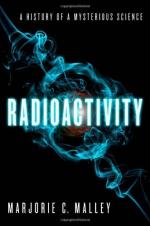|
This section contains 1,298 words (approx. 5 pages at 300 words per page) |

|
In 1896, the French physicist Henri Becquerel accidentally found that an ore of uranium, pitchblende, emits an invisible form of radiation, somewhat similar to light. The phenomenon was soon given the name radioactivity and materials like pitchblende were called radioactive.
The radiation Becquerel discovered actually consists of three distinct parts, called alpha, beta, and gamma rays. Alpha and beta rays are made up of rapidly moving parti cles—helium nuclei in the case of alpha rays, and electrons in the case of beta rays. Gamma rays are a form of electromagnetic radiation with very short wavelengths.
Alpha rays have relatively low energies and can be stopped by a thin sheet of paper. They are not able to penetrate the human skin and, in most circumstances, pose a relatively low health risk. Beta rays are more energetic, penetrating a short distance into human tissue, but they can be stopped by...
|
This section contains 1,298 words (approx. 5 pages at 300 words per page) |

|


